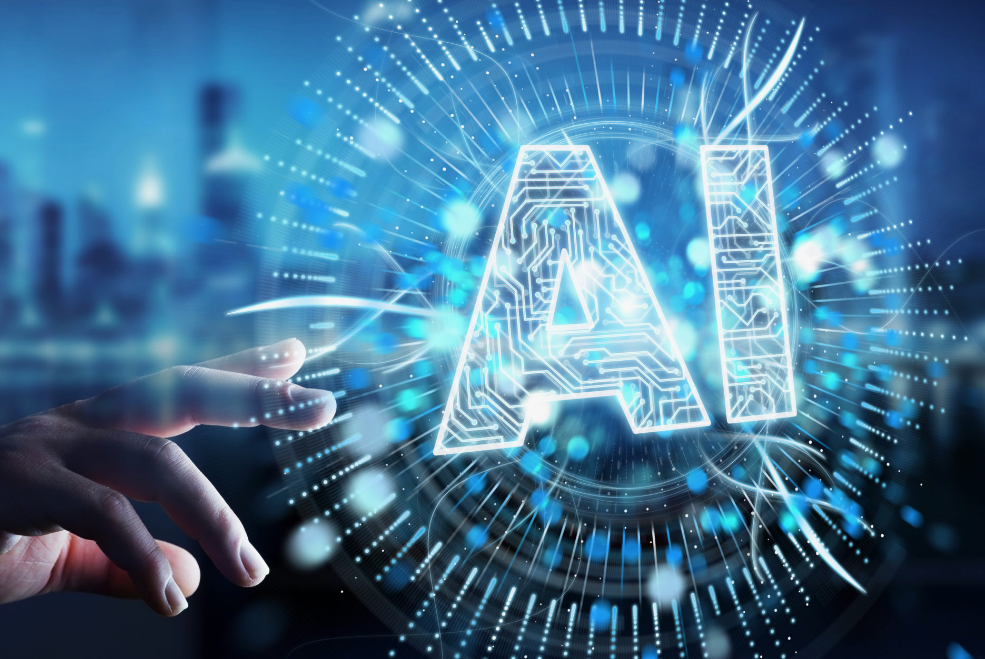Adobe Illustrator is a vector graphics editor developed by Adobe Systems. It is available through a Creative Cloud membership. Adobe Illustrator, a leading vector graphics software, offers powerful tools for creative design solutions and artwork creation. With features like Freeform Gradients and Generative Recolor, Illustrator empowers users to bring their imaginations to life. The software’s innovative tools, such as the Dimension Tool and Text to Vector Graphic, make it a go-to choice for designers worldwide.
Adobe Illustrator’s integration of generative AI, through Adobe Sensei, further enhances the creative process, allowing for seamless workflow integration and advanced design capabilities.
Adobe AI

The Evolution of Adobe AI
Adobe AI, developed by Adobe Systems, has evolved to offer advanced features, enabling seamless integration into various workflows. With embedded AI capabilities, it fuels creativity and enhances the creative process, providing a wide range of AI features in Adobe Creative Cloud to unlock new possibilities for users.
From Concept To Reality- Adobe AI
Adobe AI has come a long way since its inception. The idea of AI was first introduced in the early 2000s when Adobe realized the potential of using AI to enhance its products. The concept of Adobe AI was to create a tool that could help designers and creatives work more efficiently and effectively. Over the years, Adobe has been working tirelessly to bring the concept of Adobe AI to reality. With the launch of Adobe Illustrator® in 1987, Adobe set a benchmark for vector graphics editing software. Adobe Illustrator® has been a staple for designers all over the world.
Key Milestones- Adobe AI
Adobe has achieved several key milestones in the evolution of Adobe AI. One of the most significant milestones was the launch of Adobe Firefly. Adobe Firefly is a free generative AI tool for creatives. It allows designers to create unique and innovative designs using the power of AI. Adobe Firefly has been a game-changer for designers, making it easier for them to create stunning designs. Another milestone was the launch of Adobe Sensei. Adobe Sensei is an AI and machine learning platform that powers Adobe’s suite of products. It helps designers to work more efficiently by automating repetitive tasks and providing intelligent recommendations.
Applications of Adobe AI
Adobe AI, integrated within various Adobe software, offers a plethora of applications across different creative fields. Let’s explore how Adobe AI enhances Graphic Design, Photo Editing, and Video Production:
Graphic Design
Adobe AI revolutionizes Graphic Design by enabling designers to create stunning visuals with advanced tools like Freeform Gradients and Dimension Tool.
Photo Editing
For Photo Editing, Adobe AI provides powerful features such as Generative Recolor, allowing users to enhance and manipulate images with precision.
Video Production
When it comes to Video Production, Adobe AI offers cutting-edge capabilities that streamline the editing process and enhance visual effects for impactful videos.
Benefits of Using Adobe AI
Adobe AI, also known as Adobe Firefly, offers a myriad of benefits that can significantly enhance your design process. From time efficiency to consistent results, incorporating Adobe AI into your workflow can revolutionize the way you create. Let’s delve into the specific advantages of leveraging Adobe AI in your design endeavors.
Time Efficiency
The integration of Adobe AI in your design process can substantially enhance time efficiency. By automating repetitive tasks and offering intelligent suggestions, Adobe AI enables designers to accomplish tasks at a remarkable pace, allowing for a more streamlined workflow.
Enhanced Creativity
Utilizing Adobe AI audio capabilities, designers can tap into enhanced creativity by leveraging the generative nature of the platform. With the support of Adobe AI, designers can explore new dimensions of creativity, generating unique and innovative designs that push the boundaries of traditional design practices.
Consistent Results
Adobe AI empowers designers to achieve consistent and high-quality results across various design elements. By leveraging AI-driven tools such as freeform gradients and Adobe Text-to-Vector Graphic, designers can ensure uniformity and precision in their designs, resulting in a cohesive and polished final product.

Challenges And Limitations
While Adobe AI, particularly Adobe Illustrator, is a powerful tool that revolutionizes design and creativity, there are challenges and limitations that users need to be aware of. Understanding these aspects is essential for maximizing the potential of this software.
Accuracy Concerns
One of the challenges faced by Adobe AI is ensuring the accuracy of the output. Although the software is advanced, achieving precise results can be a complex task, especially when dealing with intricate designs and detailed graphics. Users must carefully review and fine-tune their work to maintain the desired level of accuracy.
Ethical Considerations
When utilizing Adobe AI, ethical considerations come into play, particularly in the context of authenticity and originality. Users must be mindful of ethical implications related to using AI-generated content and ensure that their work respects intellectual property rights and does not infringe on existing creations.
Future Trends In Adobe AI
As technology continues to advance, the future of Adobe AI is poised to bring about revolutionary changes in various aspects of design and creativity. From integration with AR/VR to advancements in natural language processing, Adobe AI is set to shape the way we interact with digital content and experience the world around us. Let’s explore some of the exciting future trends in Adobe AI.
Integration With AR/VR
The integration of Adobe AI with AR/VR technology is set to redefine the way we perceive and interact with digital content. By leveraging the power of artificial intelligence, Adobe is paving the way for immersive and interactive experiences that blur the lines between the physical and digital worlds. From enhancing virtual environments with lifelike elements to creating seamless transitions between augmented and real-world scenarios, the potential for creativity and innovation is limitless.
Advancements In Natural Language Processing
With advancements in natural language processing, Adobe AI is set to revolutionize the way we communicate and interact with design tools. By understanding and interpreting human language, Adobe AI will empower designers to seamlessly translate their thoughts and ideas into visual creations. From voice-activated commands for design tasks to intelligent content generation based on natural language inputs, the future of Adobe AI in natural language processing holds immense potential for streamlining workflows and enhancing creative expression.
User Experience With Adobe AI
Adobe AI, also known as Adobe Illustrator, is a powerful tool that leverages artificial intelligence to enhance the design process. Designers can harness its capabilities to streamline workflows, enhance creativity, and achieve more efficient outcomes. Let’s delve into the user experience with Adobe AI and explore its impact on design workflows.
Feedback From Designers
Designers have lauded Adobe AI for its intuitive interface and feature-rich environment. The seamless integration of AI-powered tools has garnered positive feedback, allowing designers to explore new creative avenues and produce high-quality designs. With Adobe AI’s advanced features, designers can efficiently execute complex design tasks, resulting in a more fluid and rewarding design process.
Impact on Workflows
The integration of Adobe AI has significantly impacted design workflows, revolutionizing the way designers approach their projects. The incorporation of AI-driven functionalities has led to improved efficiency, enabling designers to accomplish tasks with greater precision and speed. From generating complex graphics to refining intricate details, Adobe AI has become an indispensable asset in modern design workflows.
Adobe AI Vs Human Creativity
Adobe AI, with its powerful capabilities, has sparked discussions about the interplay between artificial intelligence and human creativity. The question arises: how does Adobe AI complement and challenge human creativity?
Complementary Roles
Adobe AI and human creativity play complementary roles in the design and creative process. While AI excels in repetitive tasks and data analysis, human creativity brings unique perspectives and emotional intelligence to the table. Adobe AI enhances efficiency in tasks such as image recognition and pattern identification, allowing creatives to focus on more complex and innovative aspects of design.

Balancing Automation and Artistry
One of the key challenges lies in striking a balance between automation and artistry. Adobe AI streamlines workflows by automating mundane tasks, freeing up time for artists and designers to explore their creative vision. However, it’s essential to maintain the human touch in design, ensuring that emotion, empathy, and storytelling remain integral parts of the creative process.
Conclusion
Innovative Adobe AI technology revolutionizes design with advanced features and seamless integration. Experience the power of generative AI in Adobe Illustrator for unparalleled creativity. Explore the future of design with Adobe’s cutting-edge tools and unleash your artistic potential like never before. Elevate your designs with Adobe AI today.

